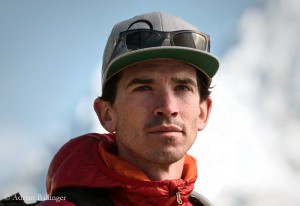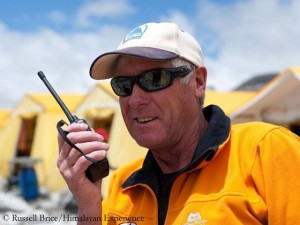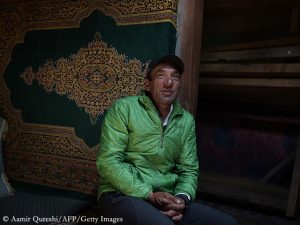Everest season “as normal as it could have been”
Before the season, actually all agreed: Commercial climbing on Everest would hardly cope with another year with accidents and without summit successes. It turned out differently. More than 400 ascents via the Nepalese south side of Everest, more than 100 on the north side, five deaths in the summit area. Everything back to normal? Any problems to point out? I’ve asked some expedition operators, who were on Everest this spring. The first three have already replied: Phil Crampton, Adrian Ballinger and Russell Brice. There are some coincidences. But read for yourself!
Crampton: “Why not regulate the mountain like Chinese do?”
For Phil Crampton, born in UK, living in the US, it was the 14th and final season on Everest. He had announced in advance that his company Altitude Junkies would focus from 2017 on “less crowded” mountains like the eight-thousanders Makalu, Dhaulagiri and Kangchenjunga. Crampton himself has scaled Everest six times. This season, the Altitude Junkies team recorded 16 summit successes. Here is Phil’s balance:
“The Everest spring season was as normal as it could have been after the devastating 2014 and 2015 seasons. The mountain was not as crowded as usual this year but that still didn’t stop the bottlenecks on summit day from the crowds of climbers that were reported from May 19th. Expedition operators and the government are already talking in Kathmandu about the increased number of foreign climbers expected for the 2017 season as many people still have permits that will be honored from the previous two years. I continue to see climbers with inadequate high altitude experience on her flanks and most of these climbers are signed up with low budget less experienced operators. Everest climbers and their experience is not regulated by the government and it seems that anyone willing to pay the $11,000 permit fee is allowed to climb. Why not regulate the mountain like the Chinese government do requiring all Chinese nationals to have previously climbed an 8,000-meter peak before being issued a permit for the north side?”
Ballinger: “Trash on the mountain, inexperienced climbers”
Adrian Ballinger tried this spring along with his US compatriot Cory Richards to climb Everest from the north without oxygen. The world could follow their ascent in real time via Snapchat under the hashtag #everestnofilter. Adrian turned around at an altitude of about 8,500 meters when he noticed symptoms of altitude sickness. Cory reached the summit. Ballinger’s company Alpenglow Expeditions had a commercial team on Everest too. That’s what Adrian wrote to me:
“2016 was a great season for Alpenglow on Everest. 100 percent of our commercial team summited (four climbers, three Sherpa) in great conditions. The north side route was in great condition, and much safer than my experience of the south side the past eight seasons. The CTMA (China Tibet Mountaineering Association) rope-fixing was, for the most part, excellent. Issues on the mountain do exist and need addressed, primarily problems caused by low-budget operators without western guides. These problems included leaving trash and human waste on the mountain, accepting inexperienced climbers on teams, and utilizing other teams’ resources due to a lack of their own. None of these problems are insurmountable, but regulation and enforcement of commercial companies on the mountain is necessary.”
Brice: “New Nepal operators with too little Sherpa stuff”
The New Zealander Russell Brice can also be satisfied with this spring’s season on the south side of Everest from his perspective as head of the operator Himalayan Experience. Six of his clients, including German Andreas Friedrich, reached the highest point. Russ has encouraged me to shorten his season record on the Himex website. That’s what I did:
“After I saw so many people going to the summit on the 19th I was not surprised to see the events that unfolded later in the season happen. Like one news article headlines, it was back to “Business as Usual on Everest” but I really wonder if we never learn from our past mistakes! There are now many more new Nepal operators here, and we see that they have limited numbers of Sherpa staff, so often these teams are unable to offer any Sherpa support to get equipment up the hill or to actually fix ropes. It was a very democratic decision to have nine different teams being involved for summit rope fixing, but it was not efficient what so ever. It would have been better to have two or three companies involved with Sherpas who all know each other and who can work well together, and also who have one Sirdar or leader to follow the instructions from. This would mean that the rope fixing would be more efficient and subsequently would be done more quickly and therefore put the Sherpas in less danger.”











